10 interesting facts about hedgehogs
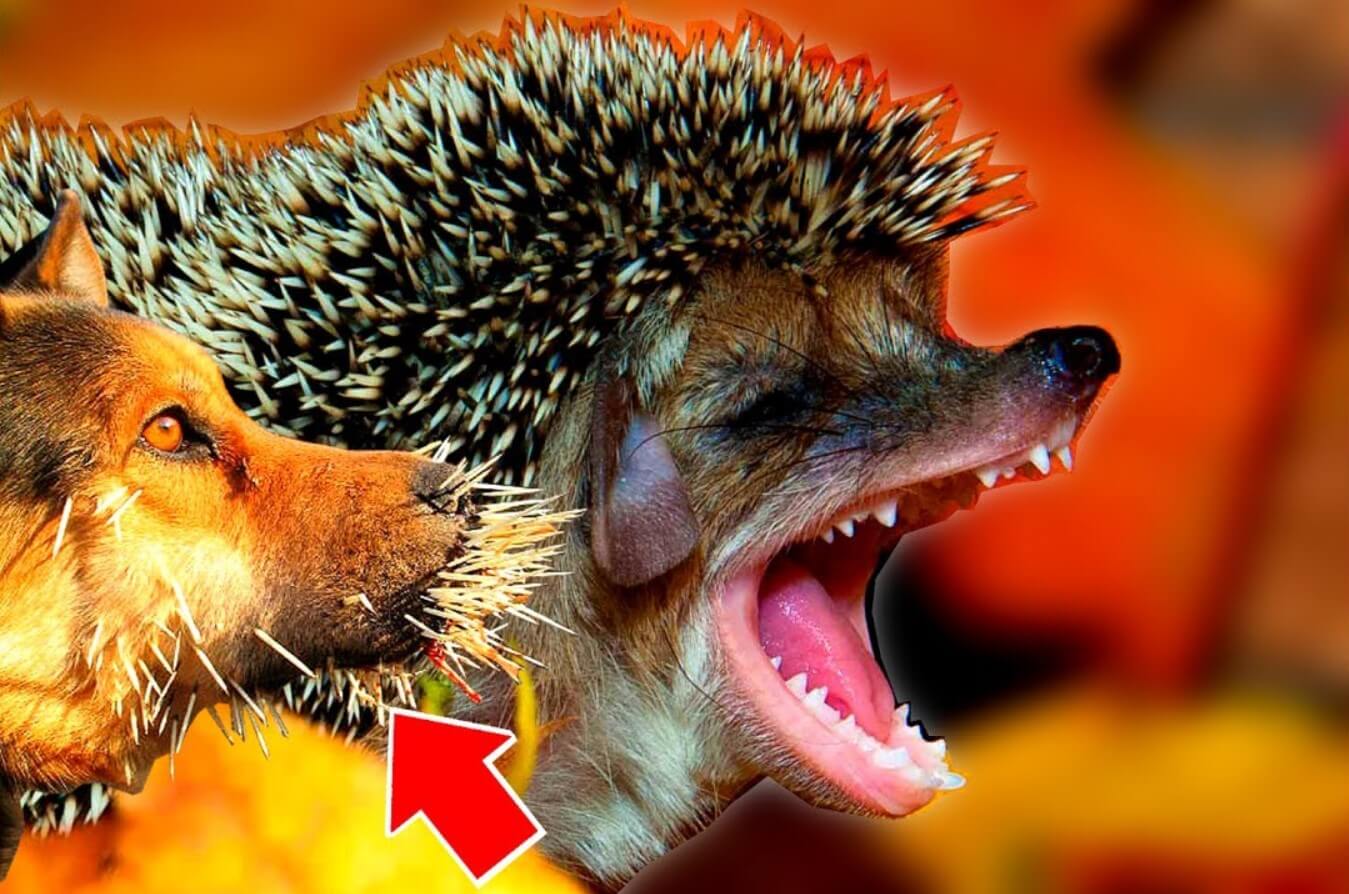
Hedgehogs are a constant inhabitant of the forest, but sometimes these little animals are also found in park areas. Despite their sharp needles, these animals are very cute and also beneficial - they destroy harmful insects (unfortunately, they also eat the useful ones).
It's worth noting that if a hedgehog has settled in your country house area, it's a good sign, just don't drive it away or distract it from its important business.
Many people probably, when they see this wonderful little animal, remember the animated film by artist and animator Yuri Norstein "Hedgehog in the Fog" from 1975, where the main characters are friends - a hedgehog and a bear. This cartoon warms the soul a little, even if it's raining outside and you're feeling down. If you haven't seen this cartoon yet - we recommend watching it, and also take some time to read about hedgehogs - these charming little animals.
We offer you 10 interesting facts about hedgehogs - prickly, but cute little creatures.
1. Contrary to popular belief, hedgehogs do not purposely carry food on themselves
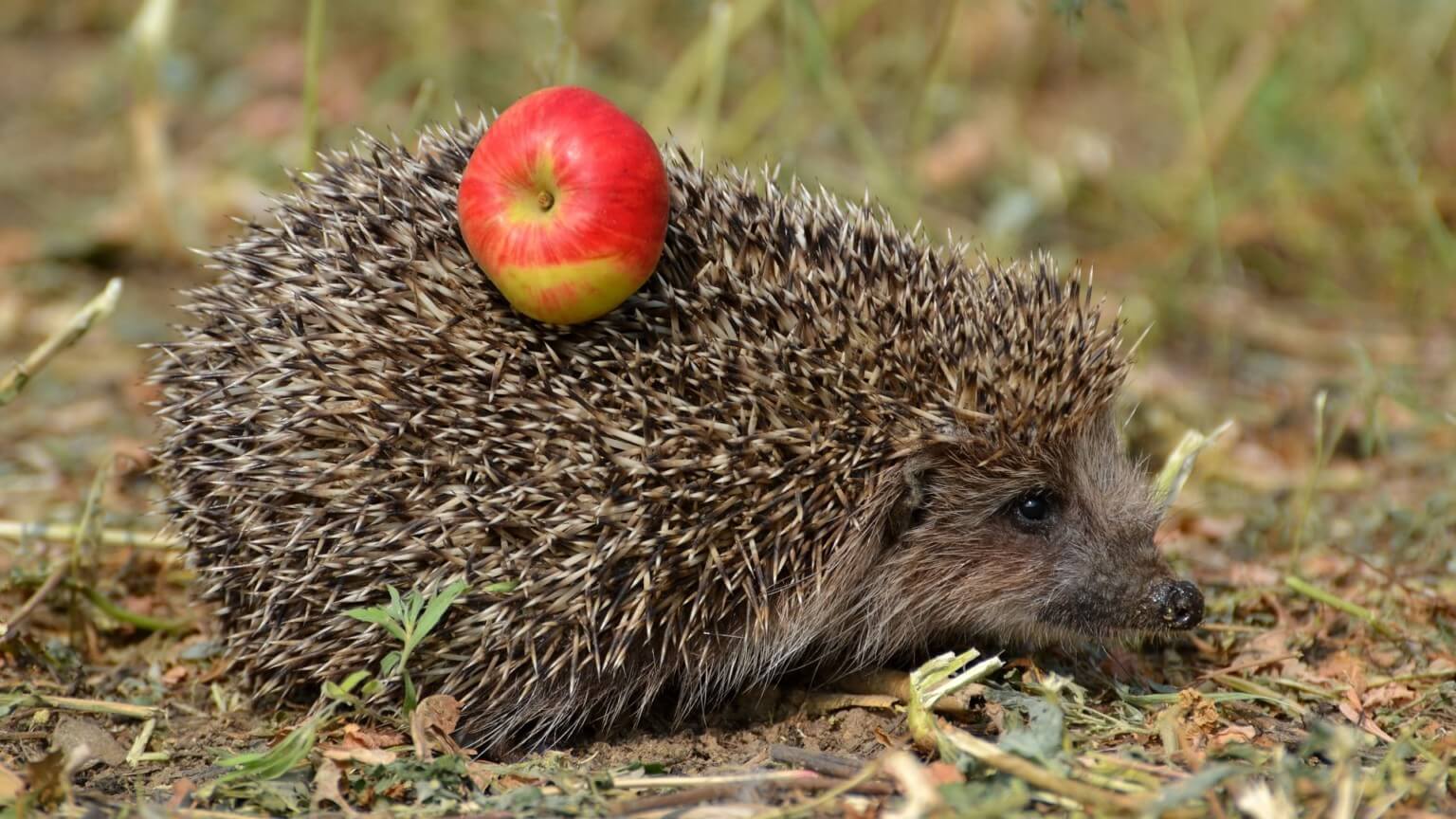
On calendars and notebook covers, there's a hedgehog carrying fruits on its needles - a very beautiful and well-known picture from childhood, but hedgehogs do this very rarely and not of their own free will. They accidentally prick themselves with the products, but they carry leaves to their burrow for bedding, because hedgehogs are hibernating animals.
The myth of hedgehogs carrying food was invented by the ancient Roman writer Pliny the Elder. Naive artists, having read the master, immediately began to depict hedgehogs adorned with juicy apples in their works. And they got so carried away that these images have been haunting us since childhood.
2. Hedgehogs with big ears very rarely curl up
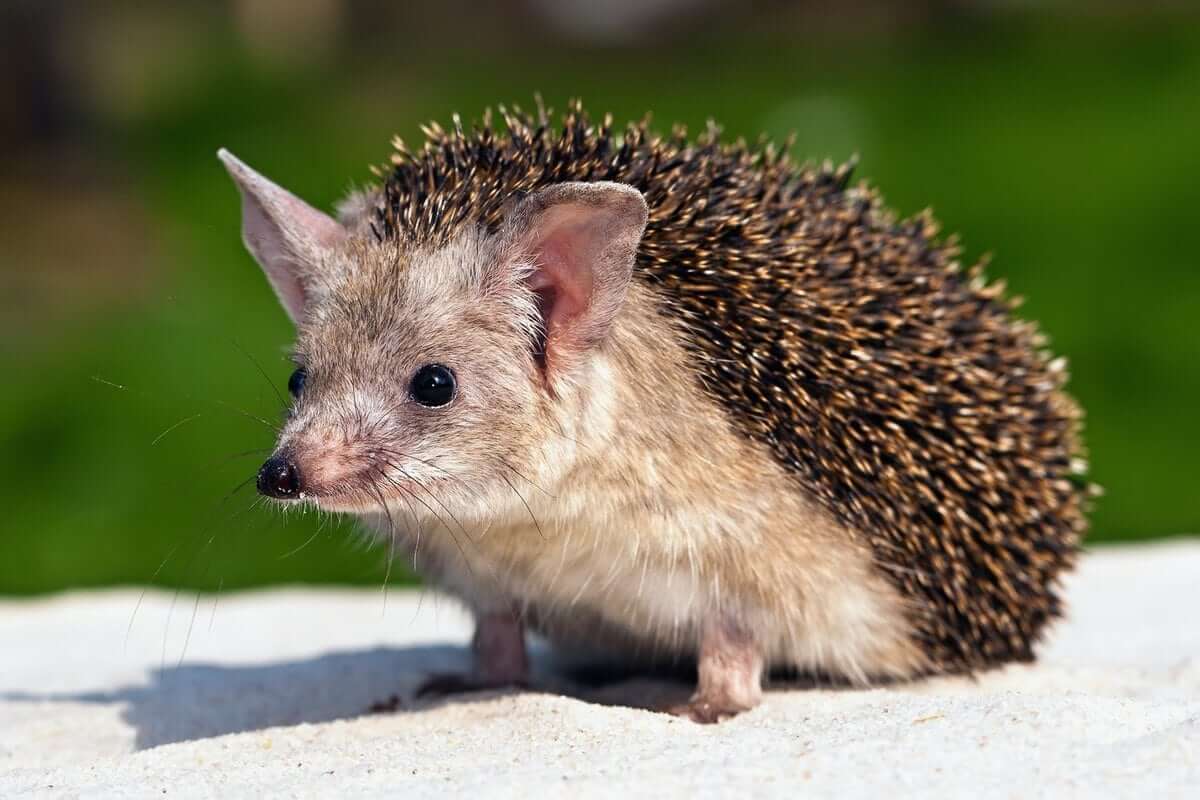
We are used to seeing a picture of a hedgehog rolling up into a ball, but not everyone likes to do that. For example, a long-eared hedgehog is reluctant to roll up into a ball even in danger. If danger approaches, he prefers to run away on his little paws (by the way, he does it faster than his fellow hedgehogs), while hissing and jumping.
Remember that a hedgehog rolls up into a ball so that no one can grab it by its tender belly (which is not protected and has very delicate skin). When a hedgehog rolls up, its quills are spread in all directions. Hence the expression "You're like a hedgehog releasing its quills," meaning that a person doesn't trust anyone and is in a defensive position against the outside world.
3. Fried hedgehog - a traditional gypsy dish

Sensitive individuals are better off skipping this section. Because many people have tender feelings for adorable little creatures - hedgehogs. Gypsies love to eat fried hedgehogs (sometimes even boiled). And, it must be said, this is the first and only national dish of Polish and Baltic gypsies, associated with their long forced life in the forests during the persecution of gypsies in Europe.
In medieval books, hedgehogs were often encountered: it was believed that the meat of this animal was very beneficial. In particular, ground and dried hedgehog intestines were recommended for use by lepers as a remedy for difficult urination. This advice was given in the book "The Culinary Book of Eberhard-Metzger".
4. Exterminating pests and rodents
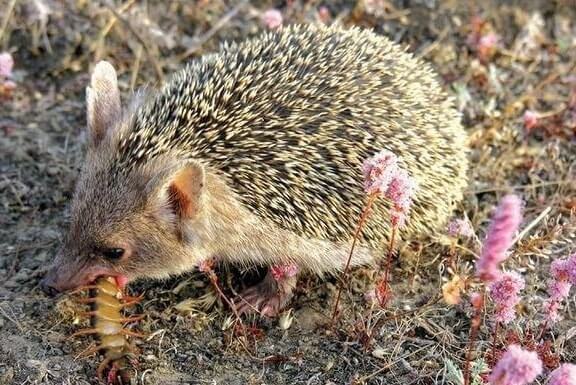
If you notice a hedgehog on your summer cottage plot, don't scare it away because it will become an excellent helper in the fight against insect pests and rodents.
Some people try to drive away these cute creatures, but in just a few days they are capable of destroying such pests as the May beetle and the wireworm. It is very difficult to fight these insects because they become active at night and hide underground during the day. But hedgehogs are nocturnal animals, and these pests cannot escape from them.
In addition, hedgehogs eagerly eat fallen fruits from trees (which is much better than leaving them on the ground or throwing them away).
For reference: during the fruiting season, hedgehogs can harm berry and vegetable plantations, which should be taken into account. They can eat strawberries or leave zucchini partially eaten.
5. In winter, it falls into hibernation
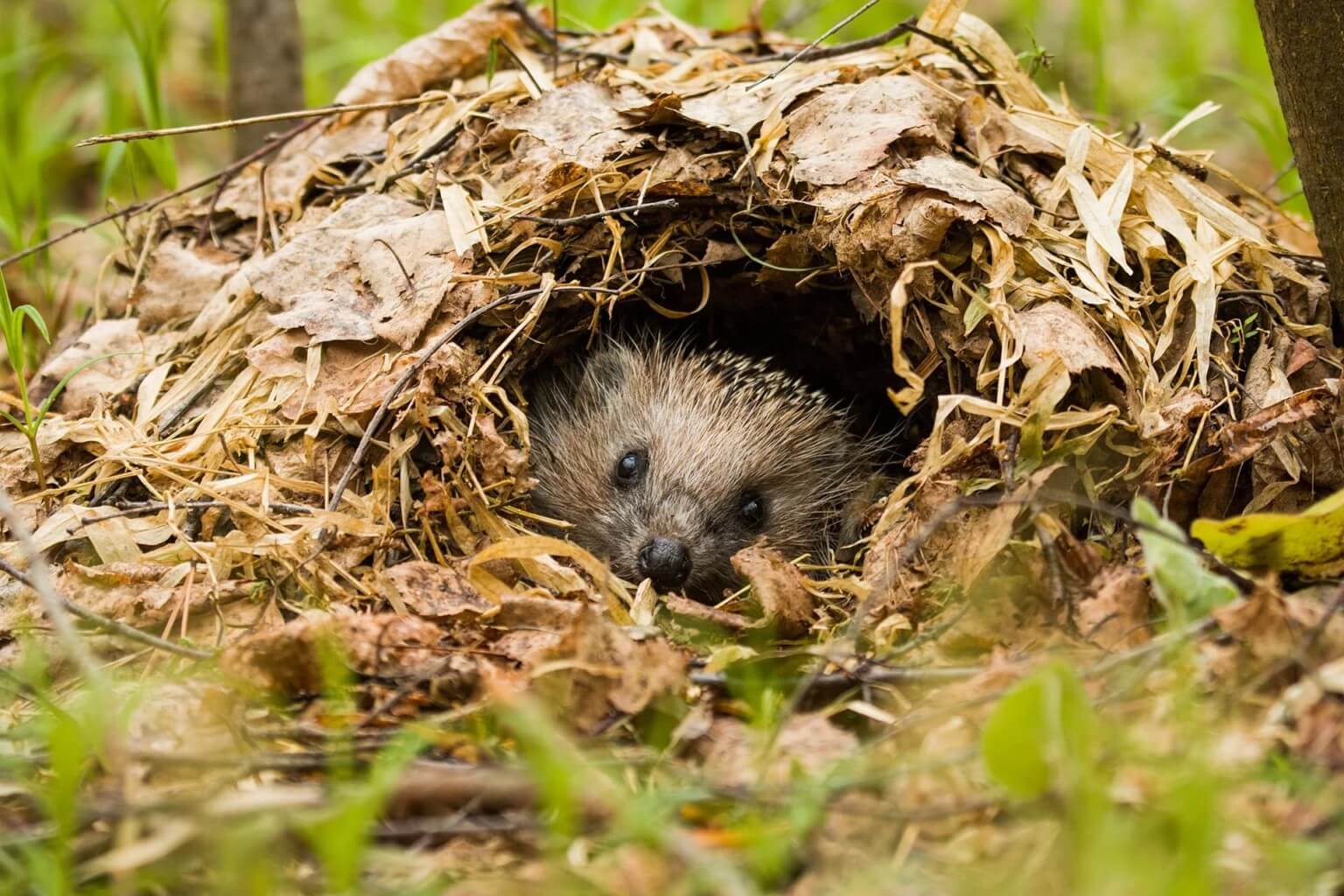
Did you think only bears do this? Hedgehogs also go into hibernation, but they don't create dens for it. Since autumn, these lovely animals rearrange their schedule for the winter. They start actively looking for a place to hibernate.
Hedgehogs happily use burrows in the forest where no one will disturb them: hollows, leaves, low-hanging branches become the ideal solution for them.
Hedgehogs are easy to find under piles of old leaves (for example, in forested areas), in large parks, or on country plots. Usually, hedgehogs hibernate as a family, but you can also find a solitary den - usually these are young "bachelors".
6. Omnivorous animal
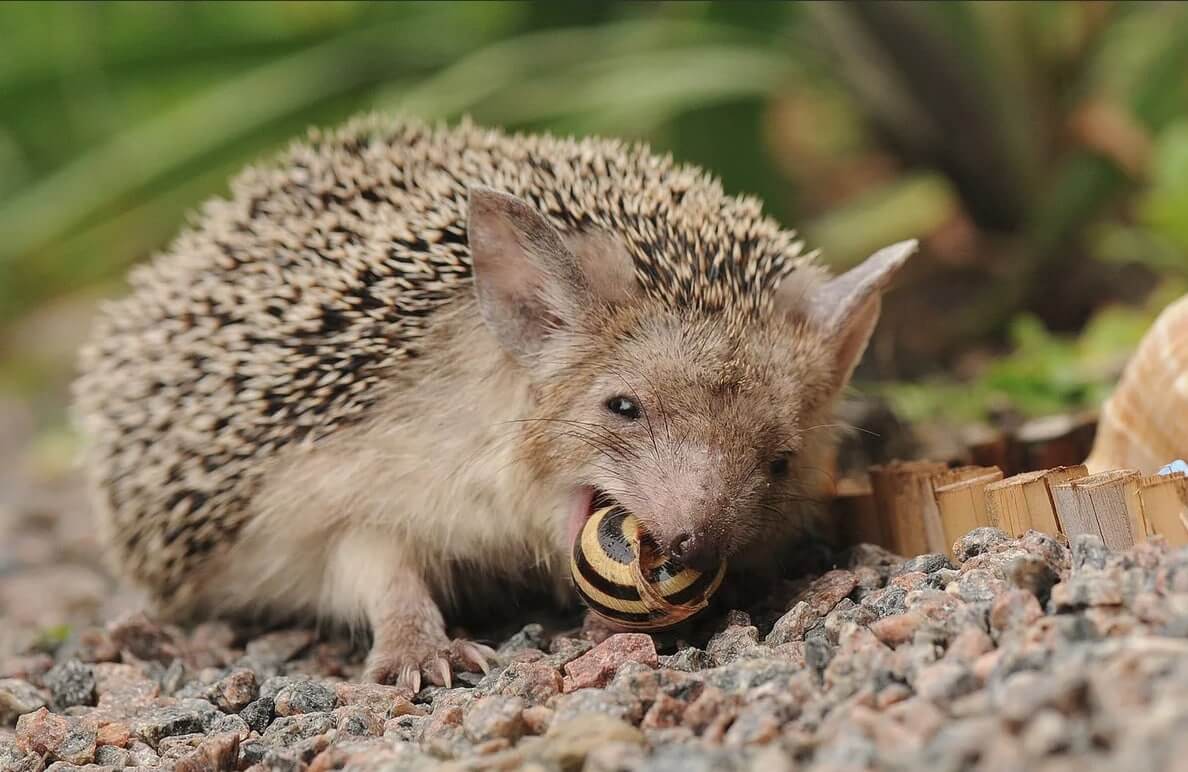
The common hedgehog is an omnivorous animal, with its diet consisting mainly of caterpillars, adult insects, slugs, mice, earthworms, etc. In natural conditions, the animal rarely attacks vertebrates; more often, the victims of hedgehogs are amphibians or reptiles that have become paralyzed.
From plants, hedgehogs prefer fruits and berries (it is often seen carrying an apple on its back. In reality, hedgehogs can carry small pieces of fruit and berries on their spines, but they are not able to lift a whole apple).
Hedgehogs kept in captivity willingly consume meat products, bread, and eggs. Contrary to popular belief, milk is not the best drink for a hedgehog.
7. Can develop speed up to 3 m/s
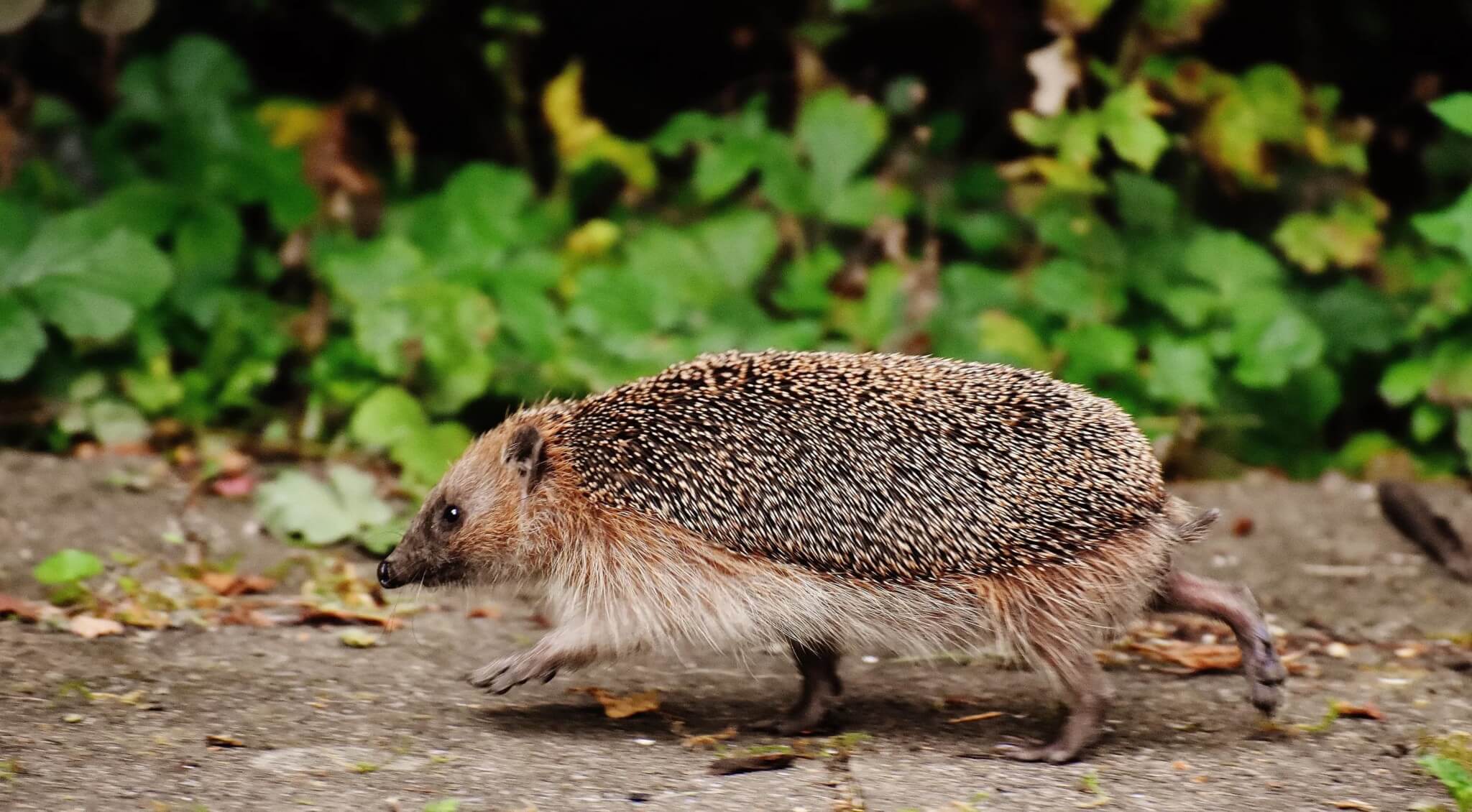
Not many people can imagine a hedgehog running somewhere and speeding up to 3 m/s. And that's totally understandable - the hedgehog has no reason to do that, and you probably have never seen a speedy little animal, but it's not slow at all. You better not try to compete with it in a race - the hedgehog will not only catch up with you, but it can even overtake you!
But that's not all about the wonderful little animal - if necessary, it can swim excellently and even jump to a height of about 3 cm (the last part is hard to imagine to agree).
8. About 10,000 needles on an animal
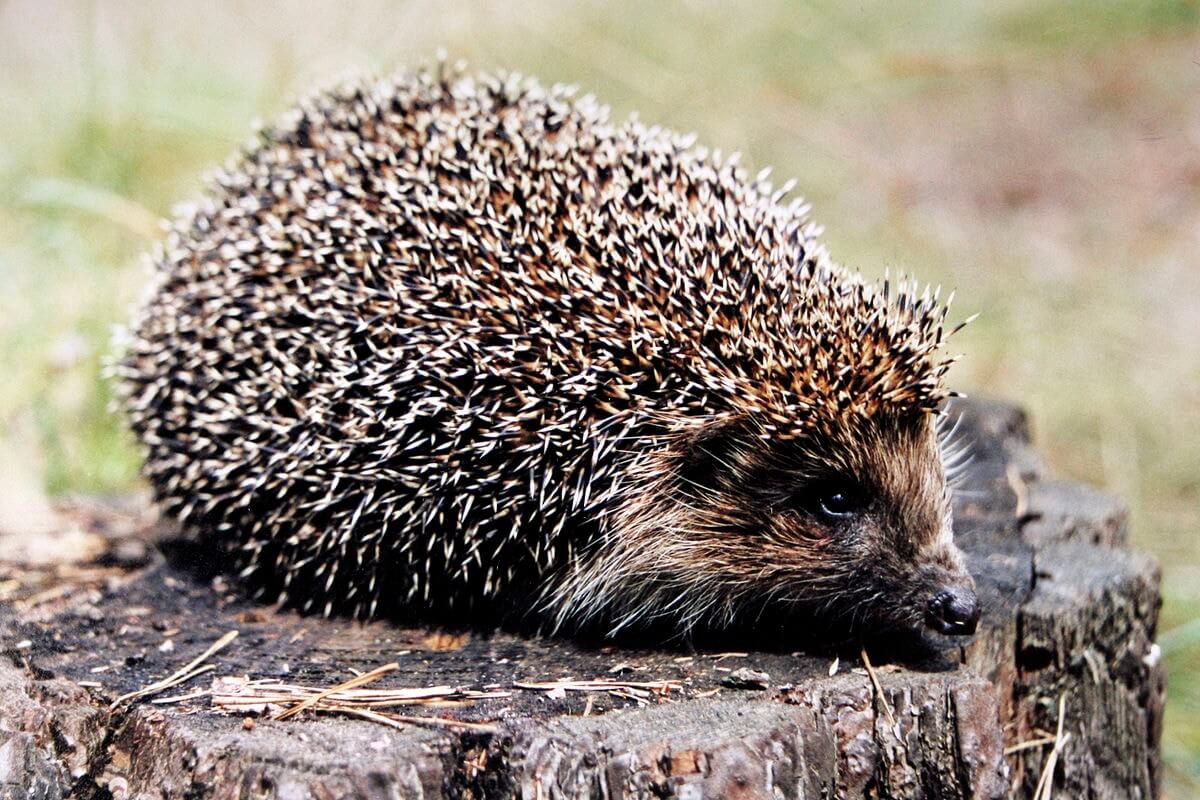
It's interesting that there are many different types of hedgehogs in the world, so it's hard to say how many quills an animal has in total. For example, our European hedgehog has 6,000-7,000 quills in an adult and 3,000 in a young one.
It is believed that as a hedgehog grows up, the number of quills increases. But this only happens during the growing process, after which their number stabilizes and the quills are periodically renewed. The maximum number of quills a hedgehog can have is 10,000.
Interesting fact: some hedgehogs do not have quills at all, for example, in the genus Gymnura or rat-like hedgehogs. Instead of quills, they have fur, and they look more like rats externally.
9. About 17 species of hedgehogs
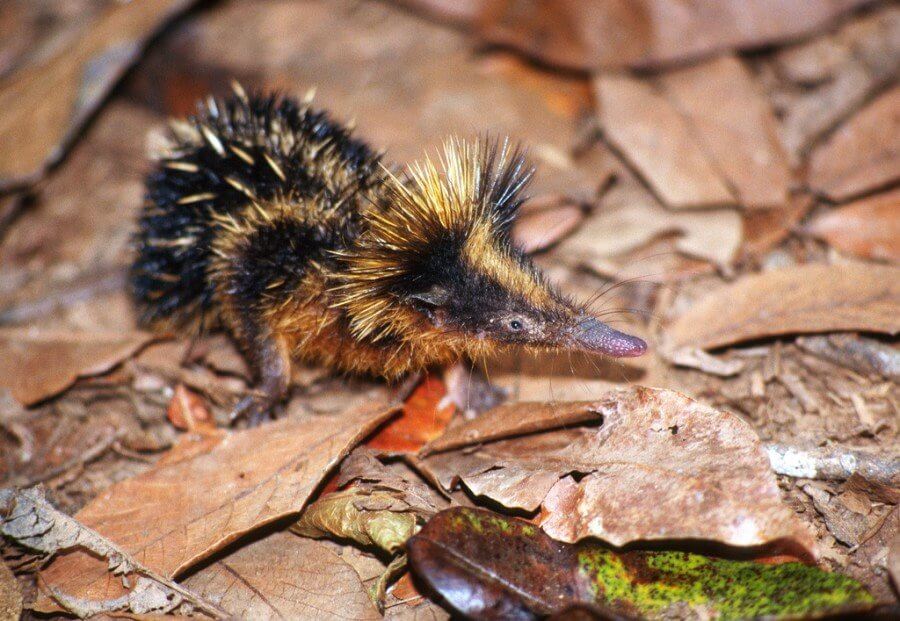
Maybe you only know a few types of hedgehogs: long-eared, Daurian, common, and long-needle. However, there are about 17 (if not more) species of hedgehogs!
The South African hedgehog, which is on the verge of extinction, has been included in the Red Book. The most common hedgehogs are: white-bellied (this species has a unique feature - its small paws lack a 5th big finger, which is not typical for its needled relatives), Algerian, common (omnivorous, small in size), and long-eared. Despite their similarities, hedgehogs differ, including in their appearance.
10. Some of the oldest mammals

Hedgehogs are widespread in Europe. We've known about these little animals since childhood, from various fairy tales and cartoons. Hedgehogs are the oldest mammals (along with moles) from the order of insectivores.
For 15 million years, these animals have inhabited various cities and countries. The only thing is, they avoid those climatic zones with constant cold and swampy areas.
Interesting fact: scientists have found an ancient "hedgehog" that lived even during the time of the dinosaurs (125 million years ago), but it looked different. This creature had big ears, short fur, a long snout, and a fluffy belly. It lived in burrows and fed on insects.
FAQs about hedgehogs
Q: What do hedgehogs eat?
A: Hedgehogs are omnivores and have a varied diet. In the wild, they consume a mix of insects, small invertebrates, fruits, and plants. As pets, you can feed them high-quality commercial hedgehog food, supplemented with live or dried insects. It's essential to provide a balanced diet to ensure their nutritional needs are met.
Q: How long do hedgehogs live?
A: The lifespan of hedgehogs varies depending on species and living conditions. In the wild, hedgehogs typically live 2 to 5 years. However, with proper care in captivity, such as a suitable diet, a clean environment, and regular veterinary check-ups, pet hedgehogs can live between 4 to 7 years or even longer.
Q: Where do hedgehogs live?
A: Hedgehogs are found in a wide range of habitats, including woodlands, grasslands, and gardens. They are native to Europe, Asia, and Africa. Hedgehogs often seek shelter in burrows, under vegetation, or in piles of leaves. In urban areas, they may also be found in parks and gardens.
Q: How much do hedgehogs cost?
A: The cost of a hedgehog can vary based on factors such as breed, age, and breeder. On average, the initial cost can range from $100 to $300. It's important to consider additional expenses for a suitable cage, bedding, food, and veterinary care. Adopting from a rescue organization may be a more economical option.
Q: How long do hedgehogs live as pets?
A: Pet hedgehogs, with proper care, can live between 4 to 7 years or even longer. Creating a suitable environment, providing a balanced diet, and scheduling regular veterinary check-ups are crucial for ensuring their well-being and longevity in captivity.
Q: Where are hedgehogs from?
A: Hedgehogs are native to Europe, Asia, and Africa. They have adapted to a variety of habitats and are found in diverse ecosystems, ranging from forests and meadows to urban gardens. Different species of hedgehogs inhabit various regions across their native range.
Q: How long do pet hedgehogs live?
A: Pet hedgehogs can live between 4 to 7 years or longer with proper care. Ensuring a balanced diet, providing a clean and enriched environment, and addressing any health concerns promptly contribute to a longer and healthier life for pet hedgehogs.
Q: What do hedgehogs eat as pets?
A: As pets, hedgehogs can be fed high-quality commercial hedgehog food, which is specially formulated to meet their nutritional needs. This can be supplemented with live or dried insects, fruits, and vegetables. It's important to avoid feeding them high-fat and sugary foods and to ensure a well-balanced diet for their overall health.





